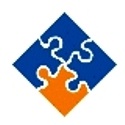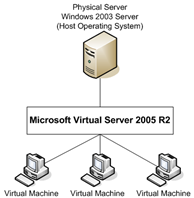This is a reprint of an email I received from Leo Quinn in New York. I’ve been promoting his program “How To Own Your Paycheck Again!“, on some of my other websites. I wish I could give a copy to everyone. Lord knows, we need it.
“NINE SIMPLE IDEAS FOR COPING WITH FINANCIAL STRESS”
In stressful financial times the media likes to remind us of other stressful times in our history. When I look at those past recessions that happened when I was a functioning member of society (a.k.a. an adult) I am struck by the fact that I don’t ever remember being aware of them. If I was aware of them at the time they didn’t scar me for life.
Here are 9 ideas to help you cope better with your financial stress in the hopes that this recession will be a soon forgotten memory for you.
1) TURN OFF AND TUNE OUT
Author Barry Neil Kaufman says “We stare bug-eyed at the eleven o’clock news, striving to be well informed, as if knowledge of the latest disasters will enhance our sense of well-being.”
Why do you need to watch or listen to the news? Very few people NEED to get their information this way. Short of a tornado headed to your house, you can live your life quite nicely without 24/7 news. Try it for a week and see what happens.
2) IT WILL NOT LAST FOREVER
Og Mandino is his book “The Greatest Salesman in the World” gave four words that “have been passed down from the ancients that will carry me through every adversity and maintain my life in balance. These four words are: This too shall pass.”
He’s right. It WILL pass and 5 or 10 years from today we’ll be reading about this in the paper and we’ll think…”oh yeah, I remember that” and it will make a great story to tell your kids or grandkids.
Who said it?…”the only difference between “tragedy” and comedy is time”
3) ZIP IT!
Quit yapping about the economy to everyone you meet. Pity parties help no one on any subject so keep the complaining to a minimum. And don’t hang around people who insist on wallowing in all the negativity.
Ed Diener, author of Happiness, Unlocking the Mysteries of Psychological Wealth, says “It’s not that you shouldn’t think about (the economic crisis) but think about it to the extent that you can control it. Put your money places where you are comfortable, deal with it and move forward.”
4) LAUGH!
Since 1922 Reader’s Digest has been telling us that laughter is the best medicine. Take daily laugh breaks. It’s so easy with the internet. Go to www.Youtube.com and search for “game show bloopers” and you’ll be laughing AND feeling smarter in seconds. Family Feud and The Newlywed Game bloopers are my favorites.
You can find Saturday Night Live and Mad TV clips all over the internet. Many cartoons, full length movies and sitcoms can be viewed in their entirety at www.Hulu.com
5) FACE YOUR FINANCES
They won’t get better by ignoring them. They won’t go away. Your credit score might be hurt if you can’t pay your bills or your get behind but you won’t go to debtor’s prison.
It’s no fun jumping every time the phone rings for fear it’s a creditor. If you need help in the U.S., visit www.NFCC.org the National Foundation for Credit Counseling. Don’t deal with any organization that promises to help you with your finances that doesn’t get a link from this website.
The specific page on that site where you can find local help is:
http://www.debtadvice.org/takethefirststep/locator.cfm
If you can pay all your debts on time now and you don’t have a plan to pay them off much faster, use my plan.
Over 18,000 people in the last 4 years have made the investment in “How To Own Your Paycheck Again!”
6) KEEP TRACK
Be ruthless in tracking your spending and income. By ruthless I mean keep track of every penny. We all have a problem with “mental accounting.” We don’t look at 50 cents as real money and thus would likely not even consider tracking expenses that small. Fifty cents a day over a year is $182.50. It really does add up.
Keeping track of all your spending can be an eye-opening experience. You’ll often discover unnecessary waste that is easy to fix.
7) GO FOR A ONE MINUTE WALK
It’s been proven that those who regularly exercise have lower stress levels than those who don’t.
In his book, “One Small Step Can Change Your Life – The Kaizen Way”, Robert Maurer, Ph.D. states that the part of our brain called the “amygdala”… “sets off alarm bells whenever we want to make a departure from our usual, safe routines. The brain is designed that way so that any new challenge or opportunity or desire triggers some degree of fear”
He suggests we take VERY small steps so as not to “wake up” our amygdala. My favorite example in the book was a client he wanted to march in place, in front of the TV for one minute a day. That would be her exercise routine. Just one minute.
Eventually she marched for 3 minute commercial breaks and then for whole shows.
“Soon her ridiculously small actions had grown into the firm habit of running one mile each day. Note that this gradual buildup to a steady program is the exact opposite of the usual pattern, in which a person starts off with ÿa burst of activity for a few weeks, but then returns to a comfortable spot on the couch”
8) START ANOTHER INCOME STREAM
People who work 9-5 and do nothing else to earn money have always perplexed me.
They get up every day, shower, drive to work, work, drive home, do whatever they do at home, go to bed and start it over again every day for 40 years.
At home they worry about job security, promotions, raises, benefits and the like but they do little if anything to ensure their own future, content to rely on an employer who may or may not be around in 5 years.
Spend some of your worry time researching ways to make extra money. Any bookstore or library will have many books on the subject.
Get your children involved. Make it a partnership. What an incredible gift to give your children. The gift of independence.
Yes, there may be laws and rules and regulations you need to follow but don’t let those stop you. They are many resources available to help.
Start at the small business administration. www.SBA.gov and also check out SCORE at www.score.org
9) PLAY THE LOTTERY!
No, not the state lottery, also known as “a tax on people bad at math”. I’m talking about the comptroller’s office lottery. Every state has an office that handles what are known as ‘Unclaimed Funds” or “Unclaimed Property”. In NY it’s called the Comptroller’s Office. Other states give it various names. Unclaimed funds are forgotten bank deposits, tax refunds, and security deposits from landlords and utility companies to name a few.
Most amounts are very small but it’s still fun to search. You can search the databases online. Most won’t tell you how much is owed but some will give you a range. Search for your name and the names of all your friends and relatives in whatever states they live.
When you find some money that is owed, point your friend or relative to the appropriate website and collect the gratitude (and hopefully a finders fee!) Soon you’ll feel like Santa at Christmas handing out wads of cash.
The site to begin your search is:
http://www.FindLostMoneyHere.com
So there are nine ideas for you to try. None of them are hard and most you’ll find rather fun. Turn off the TV and the radio…ignore the nattering nabobs of negativity and live a less stressful and more peaceful life.
**************************
Leo Quinn is a financial educator from Upstate NY. Since 1997 he has helped over 18,000 people from around the world, through his live workshops and website, get better control of their finances and pay off their debts much faster than normal.
Learn more at www.leoquinn.com
 Alex Bakman, founder and CEO of VKernel writes an excellent paper on evaluating costs of virtual machines titled, “Virtual Machines Are Not Free”. You can read the report at Vkernel’s site.
Alex Bakman, founder and CEO of VKernel writes an excellent paper on evaluating costs of virtual machines titled, “Virtual Machines Are Not Free”. You can read the report at Vkernel’s site. No evaluation of virtualization gains any validity without truthfully considering software’s real licensing costs, correct sizing for the composite number of virtual machines initially deployed within a high performance metric and projected scaling of the virtual environment within a selected time frame.
No evaluation of virtualization gains any validity without truthfully considering software’s real licensing costs, correct sizing for the composite number of virtual machines initially deployed within a high performance metric and projected scaling of the virtual environment within a selected time frame.

